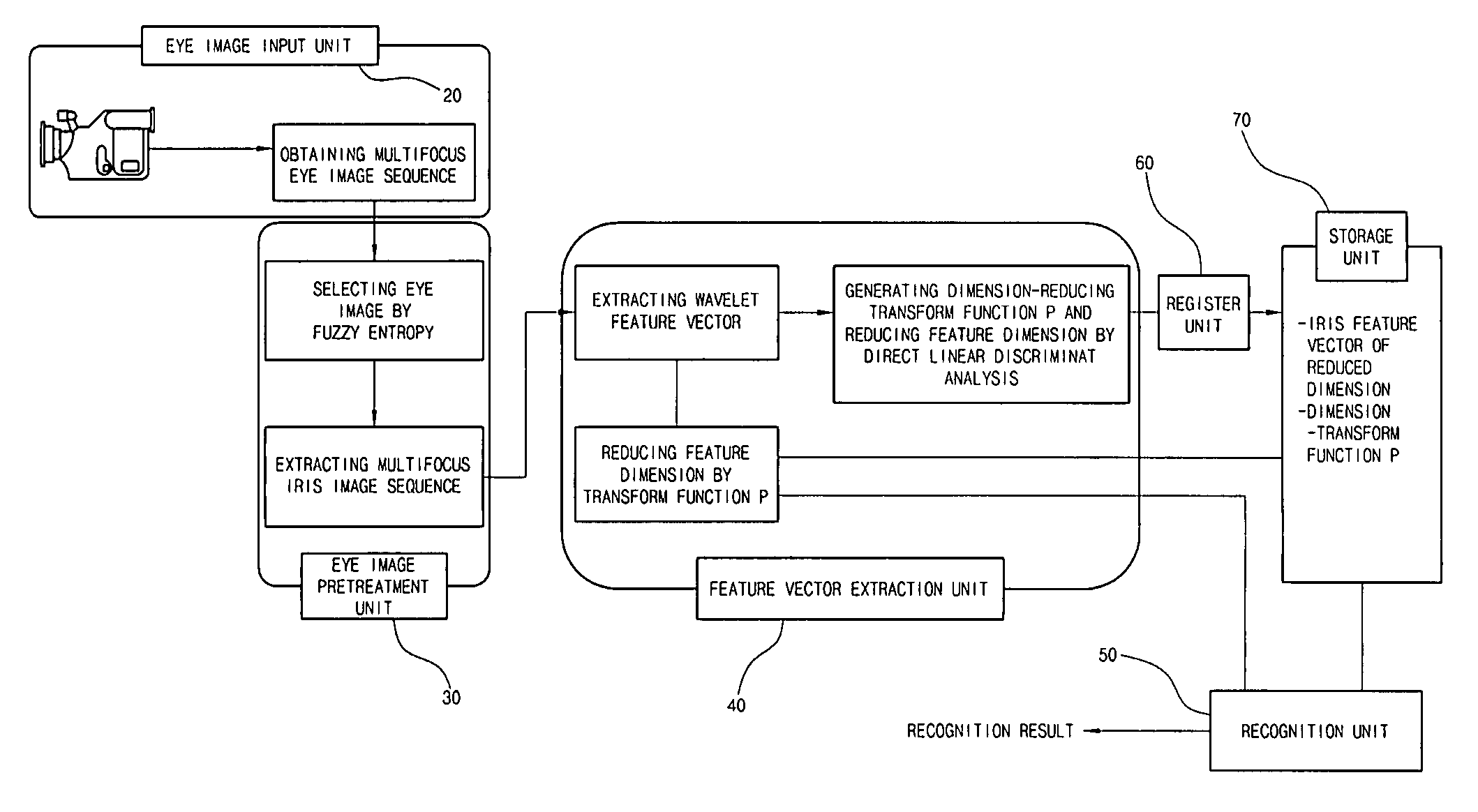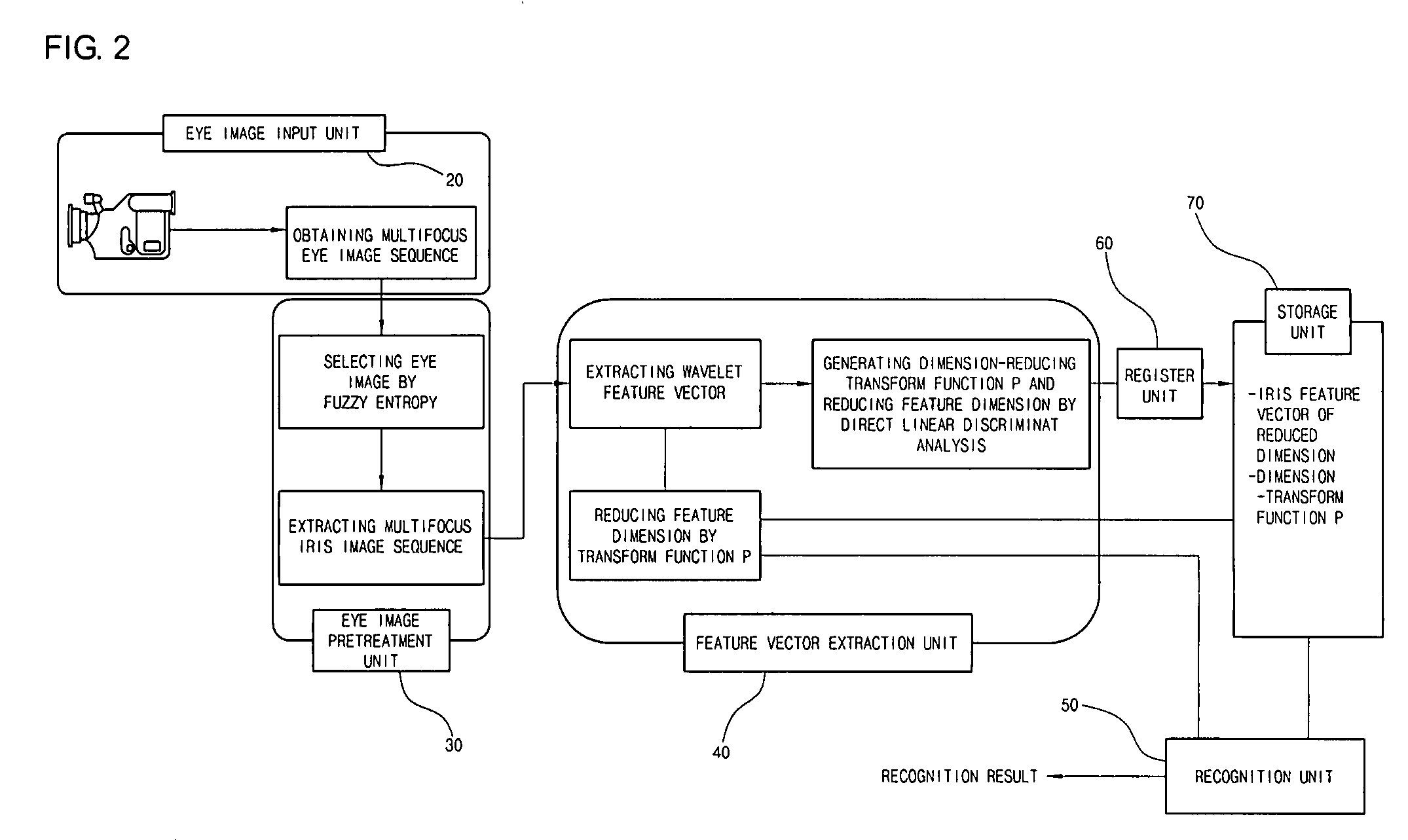Iris recognition system and method using multifocus image sequence
- Summary
- Abstract
- Description
- Claims
- Application Information
AI Technical Summary
Benefits of technology
Problems solved by technology
Method used
Image
Examples
Embodiment Construction
[0029] Hereinafter, an iris recognition system and method using a multifocus image focus in accordance with the present invention will be described in detail with reference to the accompanying drawings.
[0030]FIG. 1 is a diagram illustrating an image obtaining apparatus in an iris recognition system using a multifocus image sequence in accordance with the present invention.
[0031] As depicted in the figure, the image obtaining apparatus in the iris recognition system comprises an infrared transmission filter 11, a macro lens 12, a camera lens 13, infrared light units 14, a CCD camera 15 and a frame grabber 16.
[0032] A user's eye 10 is photographed by the CCD camera 15 through the infrared transmission filter 11, the macro lens 12 and the camera lens 13 in a state where a light is thrown from the infrared light units. Analog signals of the photographed eye image is converted into digital signals by the frame grabber 16 connected with the CCD camera 15.
[0033] Here, since an iris are...
PUM
 Login to View More
Login to View More Abstract
Description
Claims
Application Information
 Login to View More
Login to View More - R&D
- Intellectual Property
- Life Sciences
- Materials
- Tech Scout
- Unparalleled Data Quality
- Higher Quality Content
- 60% Fewer Hallucinations
Browse by: Latest US Patents, China's latest patents, Technical Efficacy Thesaurus, Application Domain, Technology Topic, Popular Technical Reports.
© 2025 PatSnap. All rights reserved.Legal|Privacy policy|Modern Slavery Act Transparency Statement|Sitemap|About US| Contact US: help@patsnap.com



